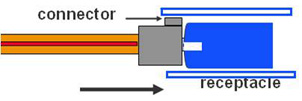Guide to Using Optical Amplifier

- OAs can be used in indoor scenarios with thermal power exchange or in environments where the working conditions of the OAs can be guaranteed.
- The OA can be installed in the QSFP-DD, QSFP28, QSFP+, or dedicated power supply port on a router.
- An OA can amplify the optical signals of just one optical fiber.
- OAs can only be used with 80 km 400GE optical modules. Specifically, the OAs and 80 km 400GE optical modules can be installed on the same board or span over different boards.
- Only optical modules matching Huawei products can be used. If non-matching optical modules are used, device requirements may fail to be met, and services may fail to run properly.
ESD Measures
Before touching any optical amplifier, wear an ESD wrist strap or ESD gloves. Take full ESD measures when installing optical amplifiers indoors or outdoors.
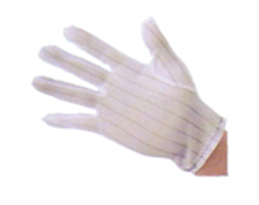
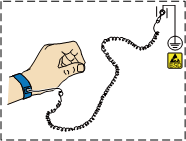
Placing Optical Apparatus and fibers
Do not touch pins or connecting fingers with bare hands. Handle the optical fibers gently. Use two fingers to hold the fiber connector instead of grasping the fiber or the fiber cover.
Do not apply axial or lateral fiber wallop bumps on the fiber. Do not fold, twist, or crush the tail fiber. Do not drag the tail fiber or press the coupling point of the tail fiber. Figure 3 shows how to properly place optical apparatus and fibers.

Install the fiber in circles with diameter longer than 6 cm ( 0.20 ft ).
Uninstalling Optical Apparatus
Pull the pull-tab latch and slowly take out the optical apparatus. Do not drag the optical fiber to forcibly take out the optical fiber. Ensure that the optical fiber is connected to and removed from the interface horizontally.
Precautions for the loosened optical module
When installing an optical amplifier, force it into position. If a crack sound is heard or a slight tremor is felt, it indicates that the latch boss is secured. When the latch boss is not secured, the connecting finger is unstably connected to the connector on the board, and the link may become Up. On the condition that the optical module tremors or collides with another object, however, the optical module will be loosened or the optical signals will be temporarily cut off.
If you cannot push the optical amplifier into an optical module cage any longer, the optical amplifier is in good contact with the board connector.
Precautions for receptacle contamination
Clean tissues must be prepared for deployment on site. You need to clean the optical connector before inserting it in the receptacle. This protects the receptacle against the contamination.

Use at least three cleaning tissues. Wipe the end of an optical connector horizontally in one direction, and then move the connector end to the unused part of the cleaning tissue to continue. Generally, one cleaning tissue is used for cleaning an optical connector.
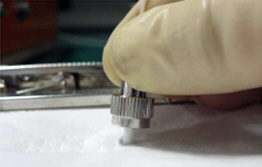
To prevent contamination, the optical amplifier should be covered with either a dust cap or an optical connector.
Lay the optical fibers on the Optical-fiber Distribution Frame (ODF) or coil them up in a fiber management tray. Make sure that the optical fibers are not squeezed.
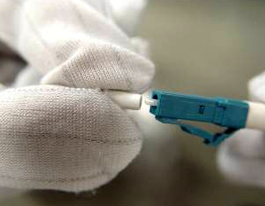
If a receptacle or an optical connector has not been used for a long time and has not been covered with a dust cap, you should clean it before using it. A cotton swab is used to clean a receptacle, and a cleaning tissue is used to clean an optical connector.

During the cleaning process, insert the cotton swab and turn it slowly in the receptacle. Do not use too much force, because the receptacle may be damaged.
If, for no apparent reason, optical signals are lost during the operation of a device, use the preceding method to clean the receptacle or the optical connector. This will eliminate contamination as the cause of the signal loss.
Precautions for the overload-caused burnt optical amplifier
When using an OTDR to test the connectivity or the attenuation of optical signals, disconnect the optical connector from the optical amplifier. Otherwise, the optical amplifier may be burnt.
When performing a self-loop test, use an optical attenuator. Do not loosen the optical connector.
Other precautions
The optical connector should be horizontally inserted in the receptacle to avoid damages to the receptacle.
